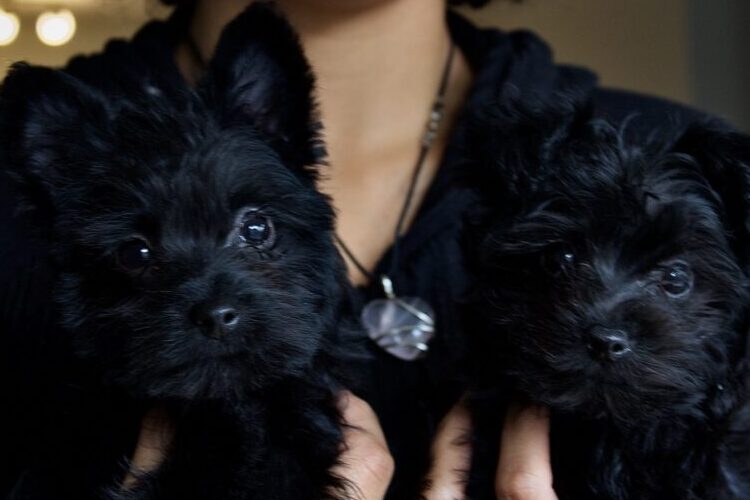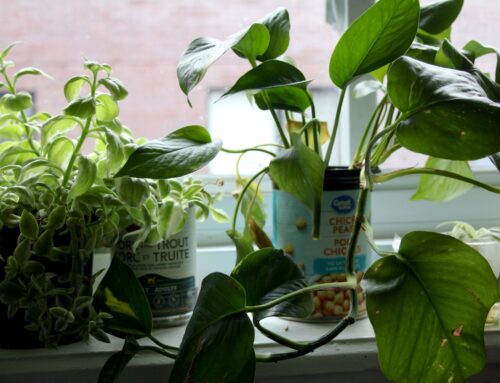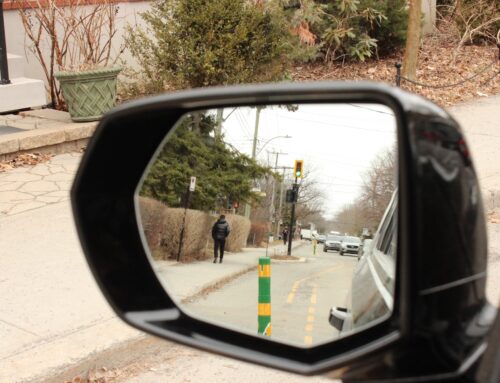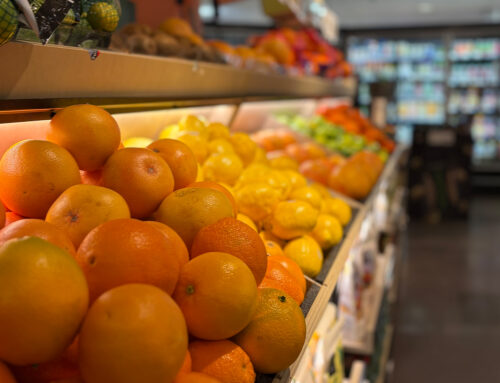BY Hannah Maione & Zaccary Valente
Balou, a fluffy and photogenic Samoyed, wears a designer bandana, sips on Starbucks “pup cups,” and celebrates his second birthday with a custom cake and a guest list of four-legged and two-legged friends. His little brother, Bear, a scruffy, spirited mutt, joined the family three months ago and is already following in his older sibling’s pampered pawprints.
For Megane Therrien, 23, her pets are more than companions—they are her children.
“They get birthday parties, matching sweaters, the works,” she laughs. “Some people save for college, I save for vet bills.”
Balou was purchased from a local at-home breeder two years ago. Therrien admits the decision was largely based on aesthetics.
“I always wanted a Samoyed. They’re just beautiful dogs,” she says. “I fell in love with the breed.”
Veronica Brandt is a seasoned breeder with over a decade of experience as a health technician and clinic manager at Montreal Bird and Exotic Veterinary in Notre-Dame-de-Grâce. Brandt explains that many popular dog breeds have been altered over time to match aesthetic trends, with selective breeding for features like large eyes, flat faces, and compact builds often coming at the expense of the animal’s health.
“Some people love that look,” she says. “But it causes breathing problems, eye issues, and weight gain—they can’t function well.”
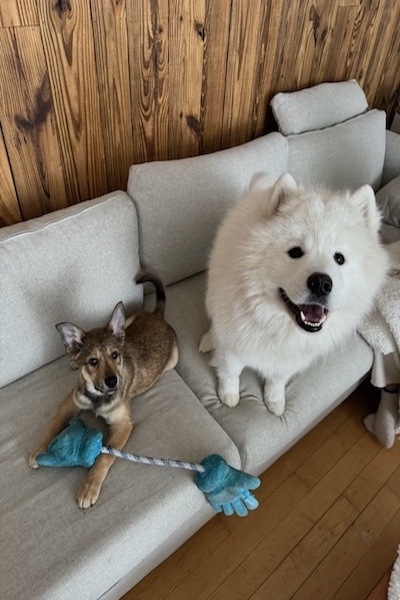
Bear lounges on the couch, paws wrapped around a bright blue tug toy, eyes sharp and ears perked. Beside him, Balou sits tall and cheerful, his fluffy coat spilling over the cushions as he beams at the camera. A moment of stillness and friendship, frozen in soft light and warm tones. Photo by Hannah Maione.
According to Brandt, North American breeding practices have strayed far from ethical standards.
“We destroy our dog breeds here,” she says. “We overbreed them, we don’t stick to proper regulations, we dock their tails, all these things that change the dog from what it’s supposed to be.”
Gloria D’Ambrosio, a veterinary technician at Vetspress and the Montreal SPCA agrees. She’s noticed a surge in brachycephalic breeds in recent years—dogs with flat faces and small frames that are highly sought after but often come with chronic medical issues.
“No breed is perfect,” she explains. “Larger dogs may suffer from joint problems, smaller breeds with dental issues, and many popular breeds are predisposed to serious conditions like cancer or autoimmune diseases.”
But the problems go beyond the aesthetic. Arianna Kefallinos, a Royal Veterinary Clinic technician and co-founder of specialty dog donut shop, Paws & Pastries, has seen the impact of irresponsible breeding up close.
“Some dogs arrive at our clinic in such neglected states that you can smell the filth before they even walk through the door,” she says. “This neglect can lead to serious behavioural issues, including aggression and extreme anxiety.”
Professional breeders can charge more than $5,000, but pet owners like Therriendo have other options.
Therrien’s second dog, Bear, came into her life through a Facebook post about a puppy abandoned on the side of the road. Though she adopted him, it wasn’t through a shelter or the SPCA.
“He needed a home. That was enough for me,” she says.
She sees no contradiction in her choices. She loves both her dogs equally and believes the decision to adopt or buy from a breeder is deeply personal. “It’s about what’s right for you and your situation,” “she says.
Adopting a dog has gotten a lot more expensive within the last few years, but what’s driving up these prices and how are dog owners budgeting? Video by Zaccary Valente.
Shelter surrenders in Montreal have soared, with total abandonments at the Montreal SPCA rising by 21% in both 2023 and 2024. Dog-specific surrenders spiked 35% in 2024 alone. With only 4.2% of apartments accepting dogs, many families are forced to give up their pets due to inflation, vet costs, and limited housing options. According to Arianna Kefallinos, the SPCA has been at full capacity since mid-2024.
“Between 2021 and 2023, many rescue organizations became overwhelmed due to a wave of pet surrenders. As life returned to normal post-COVID, some families realized they had adopted pets for the wrong reasons,” she says. “It led to a noticeable decline in pet ownership.”
D’Ambrosio confirms the trend. “Due to rising living costs, we’ve seen a significant increase in pet surrenders,” she says. “Shelters are full, and many veterinary clinics are overwhelmed and understaffed. It’s heartbreaking.”
Despite the challenges, Keffalinos remains a strong advocate for rescue.
“Choosing to rescue not only gives a deserving animal a second chance, but it also helps fight against irresponsible breeding. Plus, it’s genuinely one of the most rewarding things you can do,” Keffalinos says.
Still, she and D’Ambrosio both acknowledge that small-scale breeders can sometimes be part of the solution—if done right.
“One of the biggest risks of buying from independent breeders is acquiring a pet with a hidden predisposition to serious health issues,” says D’Ambrosio. “Without proper vetting, you could end up with a pet facing lifelong complications—and the medical costs that come with them.”
She’s also seen the fallout from online pet sales.
“Too often, owners bring in animals with no medical history, no vaccinations, and in some cases, they’re too young to have been separated from their mother. It’s a dangerous trend.”
Whether buying or adopting, D’Ambrosio stresses the importance of asking the right questions: “Meet the parents, check their medical history, ask for documentation, and make sure the environment is clean and safe. If any of that is missing—it’s a red flag.”
In contrast, Brandt, who breeds English Cocker Spaniels and Cavalier King Charles puppies, prioritizes health, socialization, and ethics. Her puppies grow up alongside her children and even visit senior homes to build confidence. Each dog is microchipped, vaccinated, and rehomed only after a careful screening.

Tucked into a bundle of soft fur and warm ears, a litter of Cavalier King Charles Spaniel puppies melt into one another in a perfect tangle of paws and peace. Raised at home by longtime breeder Veronica Brandt, this quiet moment captures the comfort and closeness that marks their earliest days. Photo by Hannah Maione.
According to Brandt, demand for dogs surged during the pandemic but so did irresponsible breeding.
“It turned into a money grab. I saw so many badly bred puppies on Kijiji. It was horrible,” she says.
But the rise of at-home breeding still raises red flags. The Montreal SPCA warns of unlicensed breeders and a lingering reputation for puppy mills. “In Quebec, it’s still far too easy to breed irresponsibly,” Brandt adds.
Quebec has long held the grim title of North America’s ‘puppy mill capital,’ with thousands of underground breeding operations thriving due to weak animal welfare laws and limited enforcement.
Under Quebec’s recent pet protection regulations, breeders are now limited to two litters per year, must provide adequate care, and need Ministry of Agriculture, Fisheries and Food of Quebec (MAPAQ) certification. MAPAQ-certified breeders are subject to surprise inspections, making the permit a key indicator of ethical, well-regulated breeding. But enforcement is murky, and platforms like Facebook Marketplace remain largely unregulated.
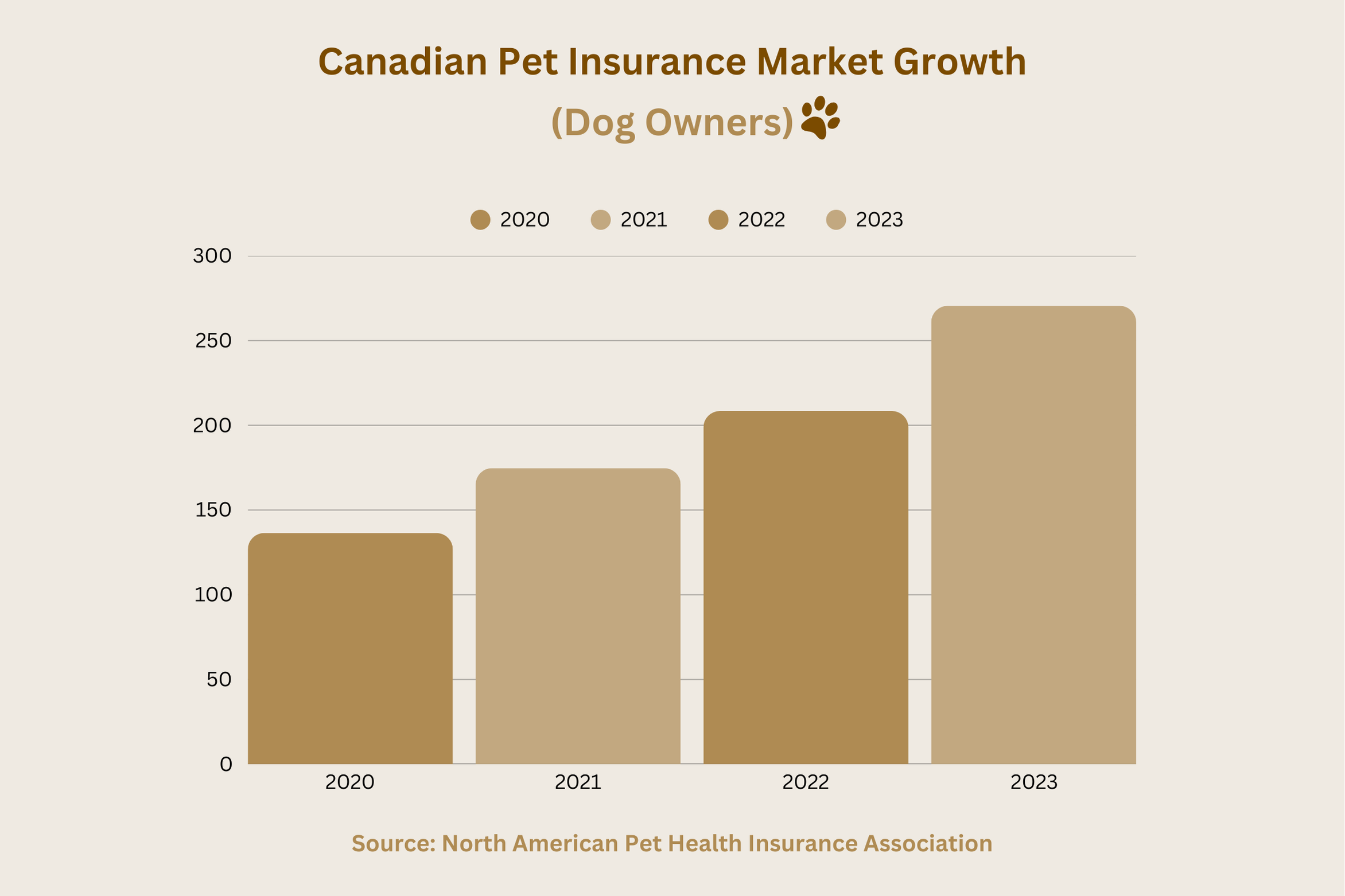
Annual growth of Canada’s dog insurance market from 2020 to 2023, based on NAPHIA statistics. Infographic by Hannah Maione.
For Anne Amin and Laisy Alicia Silva, becoming at-home dog breeders started with love of animals, not profit. Their toy poodle, Lotus, was part of the family, not a breeding machine. But the two wondered whether raising a litter at home could be a responsible, and affordable, middle ground. The pups were sold for $750 each—barely enough to break even.
“We just got paid less than minimum wage for nearly three months of work,” Amin says. Still, they understand why some people prefer puppies over shelter pets. “Shelter dogs can come with trauma. We wanted to raise puppies who were well-adjusted from day one.”
That sense of control—over temperament, breed, and health—is what attracts many to small-scale breeders. But it’s also what makes experts wary.
“Without testing and proper care, at-home breeding can become just as dangerous as puppy mills,” Kefallinos warns.

Nestled into a cocoon of crisp white blankets, a sleepy English Cocker Spaniel puppy gazes softly at the camera, eyes full of curiosity and calm. Bred at home by longtime breeder Veronica Brandt, this quiet moment captures the stillness and softness of early puppyhood. Photo by Hannah Maione.
